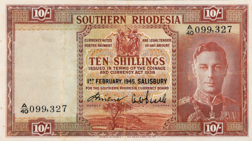
The ngultrum is the currency of the Kingdom of Bhutan. It can be literally translated as 'silver' for ngul and 'coin' for trum. It is subdivided into 100 chhertum. The Royal Monetary Authority of Bhutan, the central bank of Bhutan is the minting authority of the ngultrum banknotes and coins. The ngultrum is currently pegged to the Indian rupee at parity.
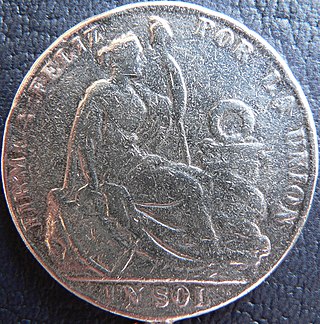
The sol, later sol de oro, was the currency of Peru between 1863 and 1985. It had the ISO 4217 currency code PES. It was subdivided into 10 dineros or 100 centavos. It also had two different superunits over its circulation life, the inca (1881-1882) and later the gold pound, both worth 10 soles.
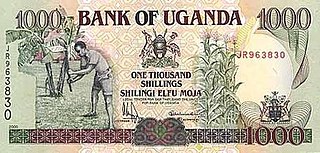
The shilling is the currency of Uganda. Officially divided into cents until 2013, due to substantial inflation the shilling now has no subdivision.

The Egyptian pound is the official currency of Egypt. It is divided into 100 piastres, or ersh, or 1,000 milliemes.

The shilling is the currency of Tanzania. It is subdivided into 100 cents . The Tanzanian shilling replaced the East African shilling on 14 June 1966 at par.
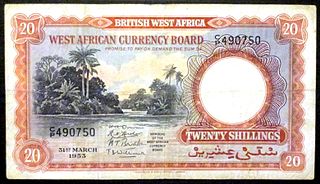
The pound was the currency of British West Africa, a group of British colonies, protectorates and mandate territories. It was equal to one pound sterling and was similarly subdivided into 20 shillings, each of 12 pence.
The peso was the currency of Paraguay between 1856 and 1944. It replaced the real at a rate of 8 reales = 1 peso. Until 1870, the peso was subdivided into 8 reales. Paraguay then decimalized, with 100 centésimos = 1 peso. The name of the subdivision was changed to centavo in 1874. The peso was replaced in 1944 by the guaraní at a rate of one hundred to one.
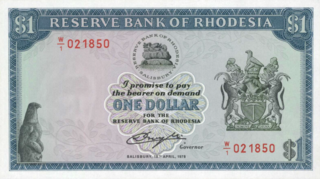
The Rhodesian dollar was the currency of Rhodesia between 1970 and 1980. It was subdivided into 100 cents.
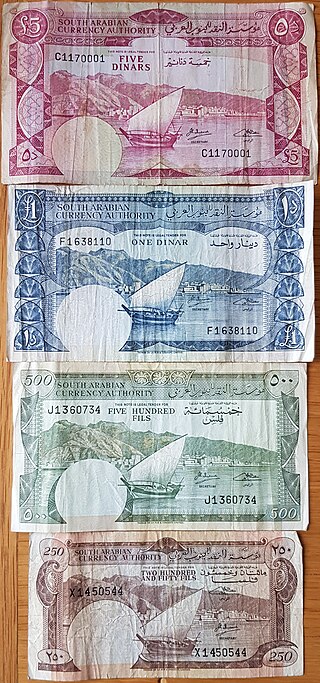
The dinar was the currency of South Arabia and then South Yemen between 1965 and 1990. It was subdivided into 1000 fils (فلس). After Yemen's monetary unification on 1 July 1990, it was one of the two official currencies used in Yemen Republic until 11 June 1996.
The rupee was the currency of Burma between 1852 and 1952, except for the years 1943–1945.

The Rupie was the currency of German East Africa between 1890 and 1916, continuing to circulate in the Tanganyika Territory until 1920.

The escudo was the currency of São Tomé and Príncipe between 1914 and 1977. It was equivalent to the Portuguese escudo and subdivided into 100 centavos.
The pound was the currency of Nigeria between 1907 and 1973. Until 1958, Nigeria used the British West African pound, after which it issued its own currency. The pound was subdivided into 20 shillings, each of 12 pence. The Nigerian pound - at parity with sterling with free convertibility - was replaced in 1973 with the decimal naira at a rate of £1 = ₦2., rendering Nigeria the last country to abandon the pre-decimal (£sd) currency system.

The pound was the currency of Ghana between 1958 and 1965. It was subdivided into 20 shillings, each of 12 pence. Until 1958, Ghana used the British West African pound, after which it issued its own currency. In 1965, Ghana introduced the first cedi at a rate of £1 = ₵2.40, i.e., ₵1 = 100d.

The pound was the currency of the Union of South Africa from the formation of the country as a British Dominion in 1910. It was replaced by the rand in 1961 when South Africa decimalised.

The pound was the currency of Zambia from independence in 1964 until decimalization on January 16, 1968. It was subdivided into 20 shillings, each of 12 pence.

The pound was the currency of the Federation of Rhodesia and Nyasaland. It was subdivided into 20 shillings, each of 12 pence.

The escudo was the currency of Angola between 1914 and 1928 and again between 1958 and 1977. It was subdivided into 100 centavos with the macuta worth 5 centavos and was equivalent to the Portuguese escudo.

The rial or riyal was the currency of North Yemen, first the Mutawakkilite Kingdom of Yemen, then the Yemen Arab Republic.

The pound was the currency of Fiji between 1873 and 1969. It was subdivided into 20 shillings, each of 12 pence.
